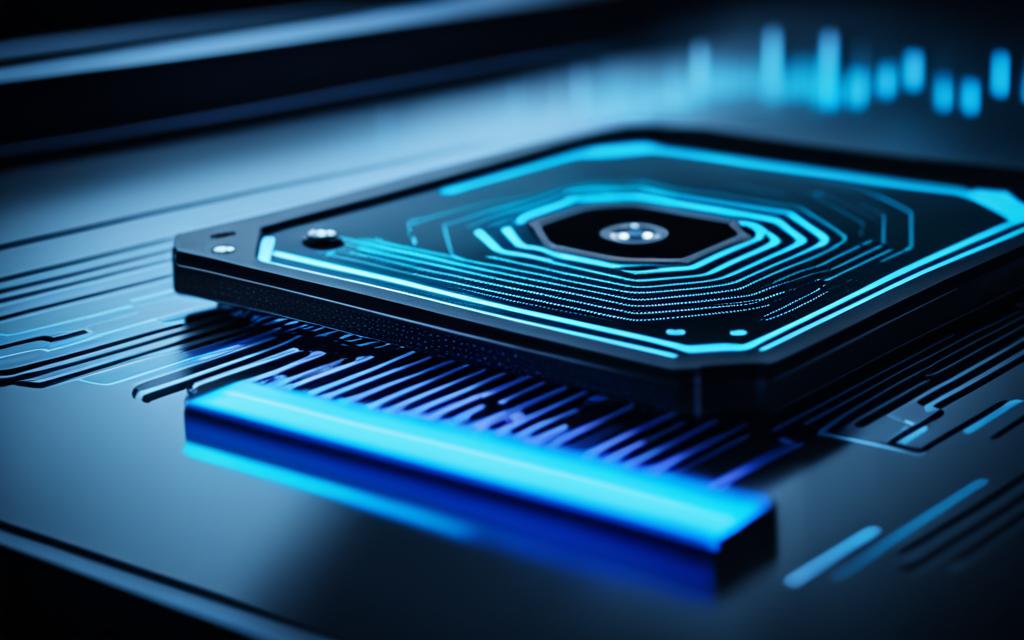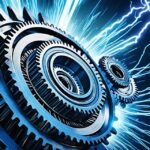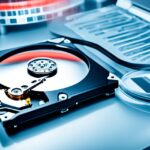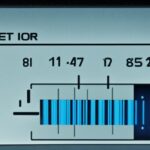Table of Contents
In the world of HDD maintenance, watching your hard drive’s status is vital. Bad sectors can appear due to various factors, like unexpected power outages, dirt, or harmful software. These bad spots can cause loss of data and make your drive work slower. Checking your hard drive for bad sectors often is key to protecting your info. It also helps your drive last longer.
Understanding bad sectors and how to spot and fix them is essential. By doing so, you are protecting your precious data from harm. This guide will show you how to check for bad sectors. We’ll cover how to know they’re there and how to keep your hard drive in good shape123.
Key Takeaways
- Regularly check for bad sectors to prevent data loss.
- Understand the different types of bad sectors: physical and logical.
- Be aware of common symptoms like crashes and error messages.
- Utilise tools such as “chkdsk” for effective checking and repair.
- Monitor disk health using S.M.A.R.T. tests for early detection.
- Consider professional help or replacement if bad sectors are extensive.
Understanding Bad Sectors
Bad sectors on HDDs are areas that don’t work properly, posing risks to your data. They come into being for several reasons like physical damage, defects from when they were made, or software troubles. When these sectors get damaged, they can cause big problems for your hard drive’s performance, making quick action essential.
Definition of Bad Sectors
A bad sector is a spot on your hard drive that can’t be used due to damage or corruption. Hard drives have millions of these sectors, and they can turn bad. They mainly fall into two types: physical ones caused by damage, and logical ones from software issues. Things like not shutting down properly or viruses can lead to these problems45.
Types of Bad Sectors
Distinguishing between physical and logical bad sectors is key for solving them. Physical bad sectors happen due to actual damage and cannot be fixed, leading to loss of data. Logical bad sectors, however, stem from software problems, like power outages or attacks by harmful software. Notably, older magnetic hard drives often get these faults as they get older56.
Keeping an eye on your HDD’s condition is vital. A few bad sectors might not be an immediate worry, but quickly increasing numbers are a warning sign. Using tools like Windows’ CHKDSK regularly can repair soft bad sectors. It can also mark the hard ones as unusable. This keeps your data safer for longer46.
Signs That Indicate Bad Sectors on Your HDD
Knowing the signs of bad sectors on your HDD is important. It helps keep your data safe and your drive working well. These symptoms of bad sectors come in different forms, and knowing them helps you act on time. This prevents losing precious data.
Common Symptoms to Watch For
Spotting HDD failure signs early on is crucial. Here are important signs you shouldn’t ignore:
- Automatic CHKDSK: If CHKDSK starts on its own when Windows boots, your hard drive might be developing a bad sector7.
- Stuck FDISK: When FDISK doesn’t work right, it could mean bad sectors are affecting your drive7.
- Stuck Disk Formatting: Problems with disk formatting that don’t go away can point to serious bad sectors7.
- Hard Drive Read Errors: Frequent read errors, especially slow file access, may show there are bad sectors7.
- Strange Noises: Odd sounds at startup can suggest bad sectors, often needing an expert’s help7.
- Boot Failure: Messages like “General Failure Reading Drive C:” or “Sector Not Found” during boot up are clear signs of bad sectors7.
The Importance of Early Detection
Finding hard drive issues early is key to avoiding major damage. Regular checks allow you to act quickly at the first sign of symptoms of bad sectors. This keeps your data safe and helps your HDD last longer. It’s comforting to use reliable data recovery services.
Techchef offers up to 100% success in getting data back from damaged drives8. Their service keeps your data private, following ISO 27001 standards8. Dealing with these signs early can prevent your drive from failing.
How to Check Bad Sector in HDD
It’s key to check your hard drive for bad sectors to keep your data safe. You can use the Command Prompt or the Windows Error Checking Tool. Both are useful for finding and fixing disk issues.
Using Command Prompt
Windows’ check disk command (chkdsk) locates file system errors and bad sectors. Open the Command Prompt and enter chkdsk C: /f /r /x. This scans for bad sectors and tries to fix them9. It works on Windows 10, 8, and 79.
You can set it to check your disk regularly. If the drive is busy, arrange to check it on reboot.
Using Windows Error Checking Tool
The Windows error checking tool is easier for non-experts. Right-click your drive in ‘My Computer,’ go to ‘Properties,’ then ‘Tools,’ and click ‘Error Checking’. It scans and fixes bad sectors automatically10.
This tool makes scanning and fixing simpler, helping you tackle bad sectors and file errors easily10.
Methods to Repair Bad Sectors
Fixing bad sectors on your hard drive is very important. It’s crucial to know the right repair methods. Tools and techniques vary, including when it’s time for a new drive. This ensures your HDD stays healthy and your data safe.
Utilising Third-Party Tools
There are many software tools that help fix bad sectors. AOMEI Partition Assistant is known for being very efficient11. It has a user-friendly interface and extra features. These include disk cloning and checking drive health. These tools can boost your HDD’s performance and spot problems early.
When to Consider Drive Replacement
Knowing when to get a new drive is very important. You might need one if bad sectors grow or if failures keep happening11. This protects your important files. Also, physical damage can mean it’s time for a change12. Be careful deciding on getting a new drive. Using a failing drive can risk losing lots of data.
For more advice on fixing computer problems like bad sectors, check out this detailed guide.
Conclusion
It’s really important to keep an eye on bad sectors to keep your hard disk drive (HDD) working well. Checking for bad sectors regularly helps you catch problems early. This way, you can avoid losing data or having your system crash. If your computer starts slowly or some files can’t be opened, it might mean there’s an issue that needs checking13.
Tools like DiskGenius Free Edition are great for finding and fixing hard drive problems easily. Knowing the difference between physical and logical bad sectors also helps. This knowledge lets you choose the best way to deal with them. Age and where you keep your HDD play a big role in its health and reliability1415.
To keep your hard drive in top shape, use maintenance tools like Check Disk regularly. Also, make sure it’s kept in good conditions. Doing these things will help protect your data. It ensures your HDD performs well for all your digital tasks13.
FAQ
What are bad sectors in a hard drive?
Bad sectors are parts of a hard drive that can’t be used anymore. They can cause lost data and reduce the hard drive’s health. Wear and tear, viruses, or not turning off the computer properly can cause them.
How can I identify bad sectors on my HDD?
Look out for signs like strange sounds, your computer crashing, or file errors. Using certain tools such as Command Prompt or Windows Error Checking helps find them.
What are the types of bad sectors?
There are physical bad sectors caused by damage to the disk. Then, there are logical bad sectors where storage clusters fail to work. It’s important to know which type you’re dealing with for proper hard drive care.
Why is early detection of bad sectors important?
Finding bad sectors early helps prevent your hard drive from breaking down completely. This way, you can protect your important files and keep your hard drive working longer.
How do I check for bad sectors using Command Prompt?
Use the Command Prompt and type in `chkdsk C: /x /f /r` to look for bad sectors. This command checks and tries to fix any problems. You might need to run it later if your hard drive is in use.
What should I do if I find bad sectors during a check?
If bad sectors are found, tools like Windows Error Checking or other software can repair them. But, if your hard drive keeps having issues, it may be time to get a new one to avoid losing files.
What are some recommended third-party tools for repairing bad sectors?
Tools like AOMEI Partition Assistant are good for dealing with bad sectors. These types of software offer more than just repairs, like checking the health of your disk and cloning it.
Source Links
- https://superuser.com/questions/1247075/how-do-i-find-bad-sectors-on-my-hdd-when-windows-10-native-programs-apps-service – How do i find bad sectors on my HDD when Windows 10 native programs/apps/services says there are none?
- https://www.diskpart.com/articles/test-bad-sectors-hard-drive-3690.html – How to Test Bad Sectors on Hard Drive or SSD [3 Methods]
- https://www.minitool.com/backup-tips/bad-sectors-on-hard-drive.html – What to Do If I Find Bad Sectors on Hard Drive in Windows 10/8/7? – MiniTool
- https://www.howtogeek.com/173463/bad-sectors-explained-why-hard-drives-get-bad-sectors-and-what-you-can-do-about-it/ – Bad Sectors Explained: Why Hard Drives Get Bad Sectors and What You Can Do About It
- https://www.easeus.com/knowledge-center/bad-sector.html – What Is Bad Sector? [Bad Sector Explained in 2024]
- https://en.wikipedia.org/wiki/Bad_sector – Bad sector
- https://www.datanumen.com/blogs/6-common-signs-indicating-bad-sectors-hard-drive/ – 6 Common Signs Indicating Bad Sectors on Hard Drive
- https://www.techchef.in/6-warning-signs-of-bad-sector-in-hard-drive/ – 6 Warning signs of bad sector in hard drive
- https://www.avast.com/c-chkdsk-windows – How to Use CHKDSK to Repair & Fix Windows Hard Drives
- https://www.easeus.com/partition-master/check-hard-drive-for-bad-sectors.html – How to Check Hard Drive for Bad Sectors – 3 Easy Ways 💡
- https://www.diskpart.com/articles/how-to-remove-bad-sectors-from-hard-disk-permanently-1881.html – How to Remove Bad Sectors from Hard Disk Permanently
- https://www.easeus.com/disk-copy/clone-resource/repair-a-bad-sector-in-windows-10-8-7.html – Repair Bad Sector: How to Fix Bad Sectors on HDD in Windows 10/8/7
- https://www.arysontechnologies.com/blog/hard-disk-bad-sector-common-causes-and-solutions/ – Bad Sector in Hard Disk – Common Causes and Know Solution to Fix It
- https://www.diskgenius.com/how-to/bad-sector-repair-software.php – How to Check and Repair Bad Sectors for Hard Drives or USB Drives?
- https://stackoverflow.com/questions/15678703/check-for-bad-sectors-on-hard-disk – check for bad sectors on hard disk












